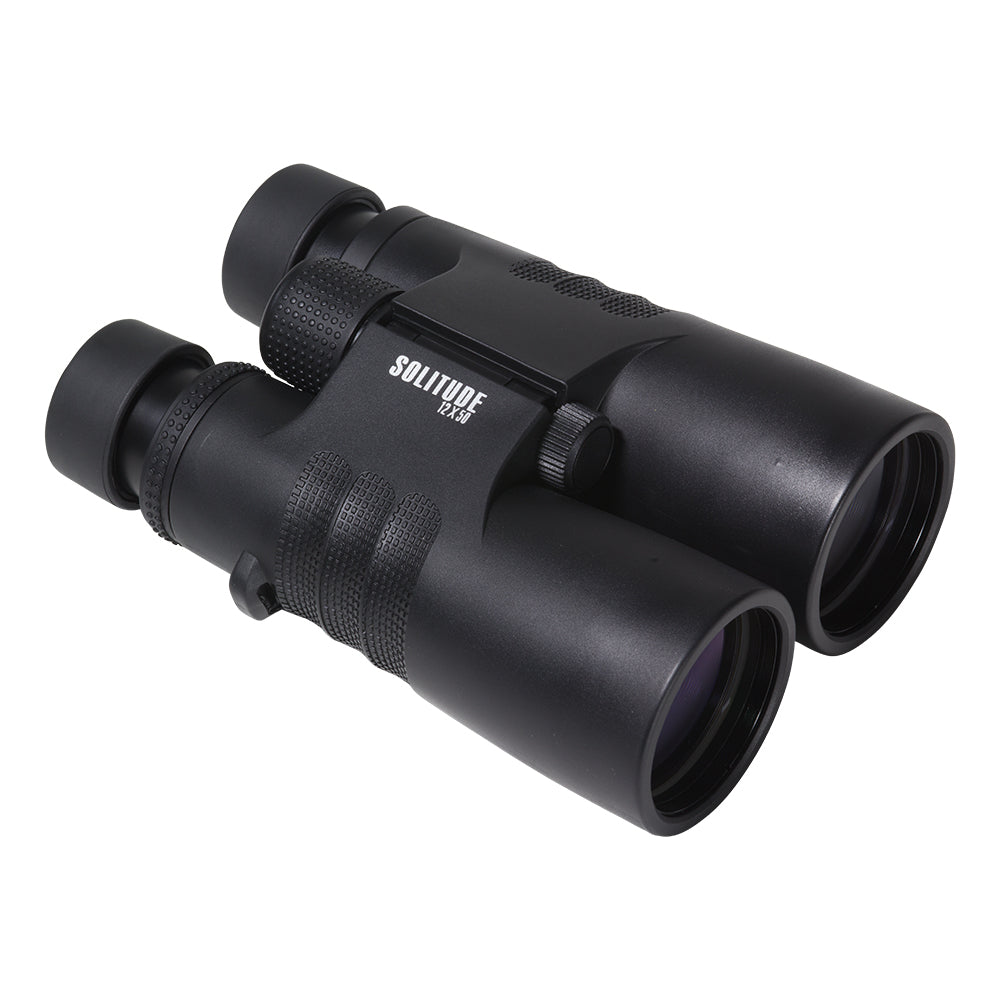Shopping for binoculars and stumbling over all those numbers? You're not alone. Getting the right pair of binoculars is key to finding your perfect window to the world, whether you’re birdwatching, hiking, or spotting on the range. Sightmark's Solitude binoculars are top contenders in the outdoor optics game, but choosing between the 12x50 and 10x42 models isn't as simple as "bigger is better." If you choose wisely, you'll spot details you never knew existed, with comfort that lets you watch for hours. Pick the wrong pair, though, and you might end up with sore arms, headaches, or frustration when that rare bird disappears before you can focus. Here’s what those mysterious digits (like 12x50 or 10x42) actually mean—and how to decide which binoculars are best for you.
Understanding Binoculars Magnification: 12x50 vs 10x42
The first number (12x or 10x) is the magnification—how much closer objects appear compared to your naked eye. The second number (50 or 42) is the diameter of the front lenses in millimeters.
Bigger lenses gather more light—like having bigger windows in a dark room—but also add bulk. It's the difference between a two-handed spotlight and a pocket-sized flashlight. Lens size is only half the story: light transmission also depends on the coatings applied to the glass.
Binocular Lens Coatings: What Makes the Difference?
Lens coatings are ultra-thin chemical layers (usually magnesium fluoride or similar compounds) that reduce glare and help more light pass through the lenses instead of reflecting off them. The more surfaces coated, and the more layers used, the better your image clarity and brightness, especially in low light.
Cheap binoculars may have no coatings, which means more glare and duller images. Others might have a single-layer coating—better than nothing, but still not great. Multi-coated lenses add several anti-reflective layers to one or more surfaces, improving brightness and contrast.
Fully multi-coated optics—like both Solitude models—go all in. Every glass surface is treated to maximize light transmission and reduce reflections. That’s why even the smaller 10x42s can deliver brightness nearly on par with the bulkier 12x50s. You’re getting more light to your eyes where it counts, with less weight on your shoulders.

Light Transmission and Exit Pupil in Binoculars
Solitude 12x50: Bucks and does are more active in early morning and evening. With 50mm lenses, you can start spotting movement earlier and continue viewing later, adding 20-30 valuable minutes to each end of your hunting day. Their larger lenses also excel on overcast days or in dense forests.
Solitude 10x42: These perform admirably in daylight and moderate low-light conditions (cloudy days or dusk). But if you need to see clearly in very dim environments, the 12x50’s bigger objective lenses will gather more light and potentially give you a brighter image.
Divide the second number by the first to get the "exit pupil" (a measure of brightness):
12x50: 50 ÷ 12 = 4.17mm
10x42: 42 ÷ 10 = 4.2mm
Shared Features of Sightmark Solitude Binoculars
Both Sightmark Solitude models include:
- BAK-4 Roof Prisms: High-density barium crown glass delivers sharper edges, better contrast, and minimal internal light scattering.
- Fully Multi-Coated Lenses: Every air-to-glass surface is treated to reduce reflection and maximize light transmission, often over 90%—for brighter, higher-contrast images in all lighting conditions.
- Long Eye Relief: Comfortable for glasses wearers and reduces eye strain during long use.
- Twist-Up Eyecups: Adjustable for those with or without glasses.
- Waterproof and Fogproof Housing: O-ring sealed and nitrogen-purged for reliable, all-weather performance.
Which Binoculars Are Better: 12x50 or 10x42?
Choose the 12x50 Solitude if:
- You prioritize long-range viewing and need maximum magnification
- You have steady hands or plan to use a tripod for stability
- You often glass during low-light conditions like dawn or dusk
- You don’t mind carrying a larger, heavier pair for better reach
Choose the 10x42 Solitude if:
- You regularly follow fast-moving subjects like birds or athletes
- Portability matters and you’ll be hiking, walking, or on the move
- You want a wider field of view for tracking or scanning
- You prefer a lighter, more versatile option for all-around use
Both models are built Sightmark-tough, so whichever you choose, they'll be ready for action long after your smartphone becomes a paperweight. Happy viewing!
Frequently Asked Questions
What do the numbers in binoculars like 12x50 or 10x42 mean?
The first number represents the magnification power, while the second number represents the diameter of the front lenses in millimeters.
What is the difference between 12x50 and 10x42 binoculars in terms of light gathering?
Bigger lenses, like the 50mm ones in 12x50 binoculars, gather more light compared to the 42mm lenses in 10x42 binoculars.
How do lens coatings affect the image quality in binoculars?
Lens coatings reduce glare and help more light pass through the lenses, improving image clarity and brightness, especially in low light conditions.
What is the significance of exit pupil in binoculars?
The exit pupil is a measure of brightness in binoculars. It is calculated by dividing the diameter of the front lenses by the magnification power.
In what situations would 12x50 binoculars be more beneficial compared to 10x42 binoculars?
12x50 binoculars are more beneficial in low light conditions, such as early morning or evening, as they gather more light and provide a brighter image.
What are the advantages of fully multi-coated optics in binoculars?
Fully multi-coated optics maximize light transmission and reduce reflections, resulting in improved brightness and contrast in the images viewed through the binoculars.







